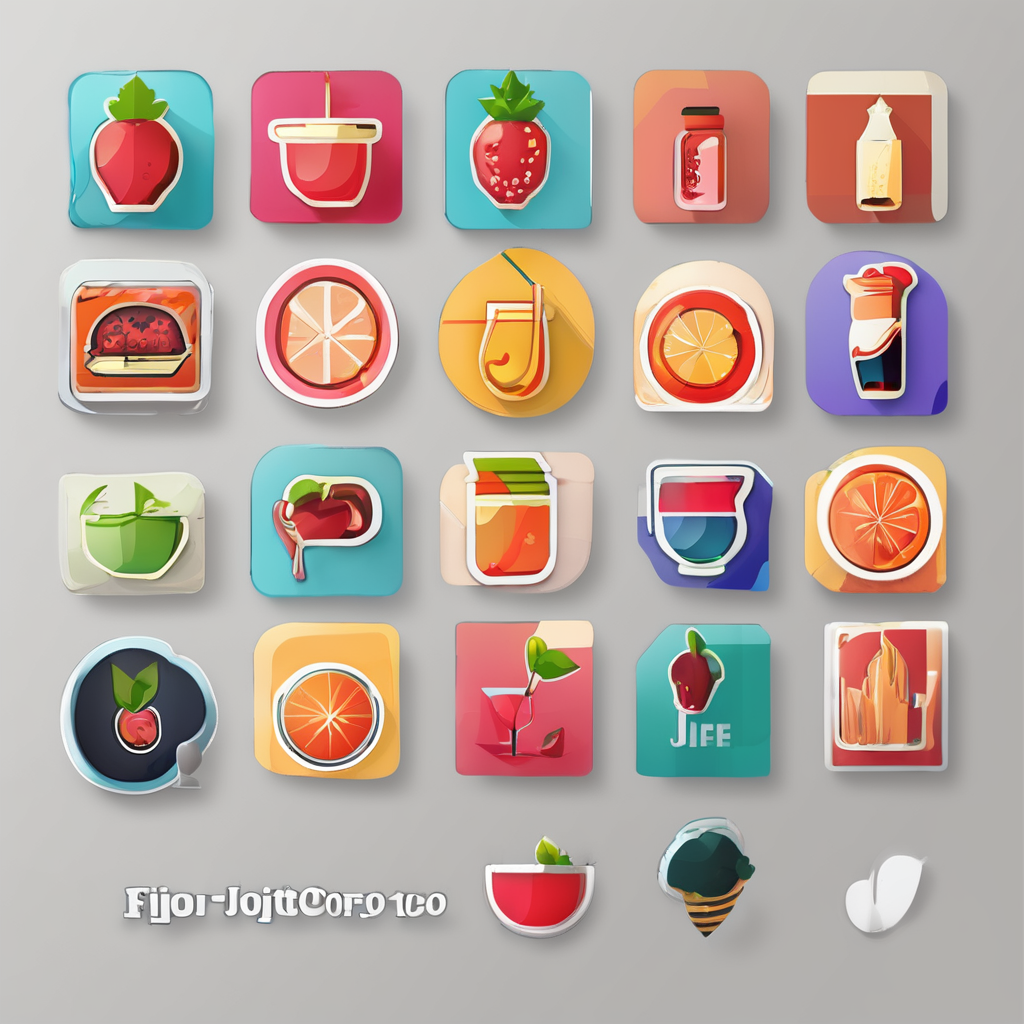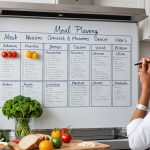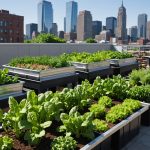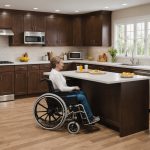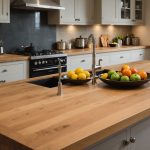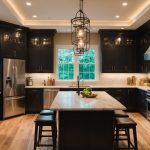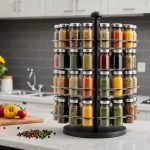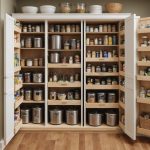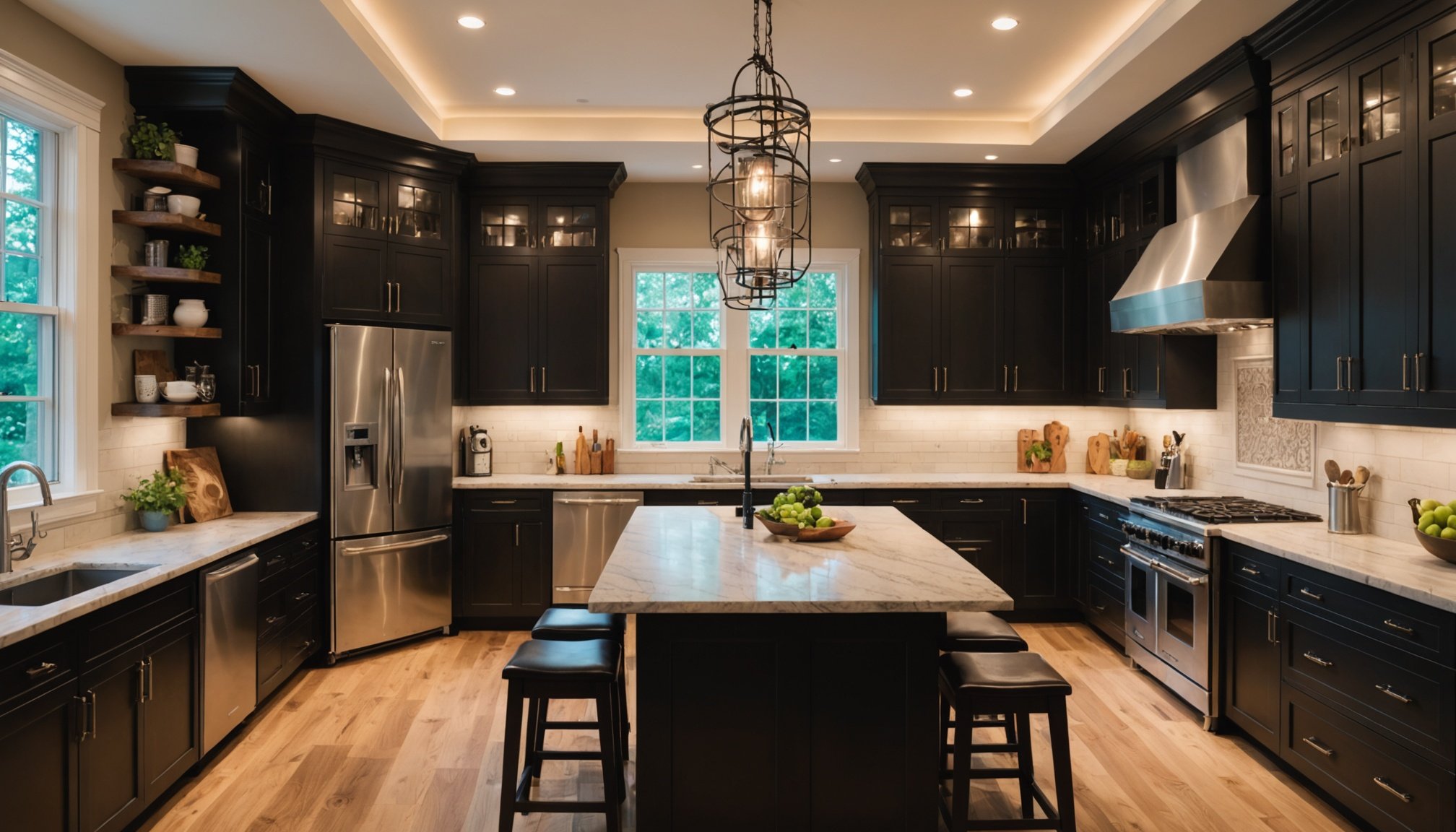Understanding Multi-Zone Kitchen Design
A multi-zone kitchen is a well-organized space that enhances culinary experiences through distinct areas tailored for specific tasks. By separating activities, such as cooking, food preparation, and storage, this design approach caters to diverse cooking styles and improves functionality and accessibility. One of its key benefits is the seamless flow it creates, allowing different culinary activities to occur simultaneously without interference.
Kitchen design principles are central to crafting an effective multi-zone layout. Start by considering the overall functionality and how each zone will interact with one another. It’s important to focus on accessibility, ensuring that all essential tools and appliances are within reach. Proper planning reduces unnecessary movement, which in turn enhances efficiency and enjoyment in the kitchen.
Have you seen this : Designing an inclusive kitchen: innovative tips for wheelchair-friendly spaces
Some cardinal design principles include:
- Clear delineation of zones: Separating areas for cooking, preparation, and storage.
- Efficient use of space: Ensure all equipment and appliances are optimally placed.
- Accessibility: Prioritize ease of movement and reachability of key kitchen components.
By adhering to these principles, your kitchen can cater to a wide range of culinary experiences, making it a delightful space for both daily meal preparation and hosting unforgettable gatherings.
Additional reading : Maximize your kitchen”s charm: expert tips for positioning your ideal wine cooler
Key Zones in a Multi-Zone Kitchen
In a multi-zone kitchen, distinct areas are crucial for enhancing cooking efficiency and organization. Properly designed cooking zones, preparation areas, and refrigeration and storage zones are essential components. Let’s delve into each zone’s purpose and functionality.
The Cooking Zone
This zone is a kitchen’s heart, dedicated to cooking activities. Placing the stove, oven, and essential utensils here streamlines cooking processes. Strategic planning of the cooking zone ensures swift transitions between tasks without unnecessary movement. Positioning this area near preparation zones optimizes workflow, allowing easy access to ingredients and tools.
Preparation Areas
Preparation areas are designed for food prepping tasks. Equipped with ample counter space, cutting boards, and necessary tools, this zone is where ingredients are washed, chopped, and garnished. Integrating sinks and waste bins facilitates cleanliness and organization. Proximity to both cooking and storage zones enhances efficiency, as ingredients move seamlessly through each phase of meal preparation.
Refrigeration and Storage Zones
Dedicated to housing perishable items and kitchen essentials, these zones focus on functionality. Proper arrangement of refrigeration units allows for easy access while minimizing interference with cooking and preparation areas. Shelving and innovative storage solutions maintain order, while preserving space for other kitchen activities. Clever use of these zones supports overall kitchen harmony and efficiency.
Layout Suggestions for Optimal Efficiency
Achieving an effective kitchen layout is pivotal for optimal space optimization. One key aspect is the flow design—a seamless arrangement that enhances functionality. A well-structured layout ensures smooth transitions between zones, minimising disruptions during meal preparations. For limited spaces, zoning efficiently is vital. Multi-functional furniture and compact appliances can turn small areas into efficient culinary hubs.
Design strategies include clear delineation of tasks and traffic routes, ensuring that cooking and preparation zones communicate effortlessly. Strategic placement of the refrigerator near the preparation area reduces unnecessary foot traffic. Incorporating diagonal paths optimises space within tight confines, promoting effective workflow.
Case studies of successful multi-zone kitchens highlight the value of intentional design choices. For instance, a U-shaped layout can facilitate easy access to cooking, preparation, and storage zones, offering an efficient working triangle. In an L-shaped kitchen, design may orient zones along perpendicular lines, utilising corner spaces for extra storage or seating. These strategies exemplify how thoughtful design translates into functional and harmonious cooking environments. By prioritising flow design and space optimization, even the smallest kitchens can become efficient multi-zone wonders, offering both practicality and pleasure in daily use.
Innovative Ideas for Multi-Zone Functionality
Incorporating kitchen innovation into a multi-zone kitchen design can revolutionise your culinary space. By implementing creative solutions like movable fixtures, you can create adaptable spaces that cater to diverse cooking needs. For instance, rolling countertops or mobile islands provide flexibility, allowing the kitchen to transform as needed. These innovative additions can enhance both functionality and aesthetics, making the kitchen more dynamic.
Functional design paired with technology can further elevate the kitchen experience. Smart appliances, such as programmable ovens or voice-controlled lighting, integrate seamlessly into multi-zone kitchens, offering convenience and efficiency. These gadgets not only streamline meal preparation but also enhance user interaction with the kitchen, creating a modern and connected environment.
Real-life examples demonstrate the potential of such innovation. Some contemporary kitchens utilise retractable storage solutions that disappear when not needed, maximising available space. Others integrate digital recipe stations that suggest meals based on available ingredients, offering practical assistance to home chefs.
In exploring multi-zone kitchen ideas, balance creativity with utility. Think about how these innovative designs can improve workflow and delight your culinary experiences. Embrace technology and adaptable design elements to craft a kitchen that is both forward-thinking and deeply personal.
Practical Tips for Achieving the Ideal Multi-Zone Kitchen
Achieving an ideal multi-zone kitchen begins with a comprehensive design plan tailored to personal cooking habits and style preferences. Central to this planning is the assessment of space requirements. By conducting a detailed analysis, consider your cooking routines, family size, and entertaining styles to effectively allocate space for each kitchen zone. This foresight ensures that each area fulfills its intended purpose without cramping the others.
When selecting materials, it’s crucial to match them with the kitchen’s functions. Choose durable surfaces for high-activity zones and more aesthetically pleasing materials for less industrious areas. For example, stainless steel works well in food preparation zones for its easy-to-clean properties, while natural wood might enhance the cooking zone’s warmth and appeal. This balance not only maximizes functionality but also maintains the kitchen’s visual appeal.
Personalizing your kitchen involves integrating design elements that resonate with your unique tastes and culinary needs. Customize storage solutions to accommodate frequently used utensils or specialty equipment. Tailoring these aspects brings harmony to the kitchen, making daily experiences enjoyable and uniquely yours. Embrace these practical tips to craft a kitchen that is both efficient and a reflection of your personal style.
Real-Life Inspiration: Successful Multi-Zone Kitchens
Design inspiration can transform your kitchen into a haven for culinary exploration. Successful multi-zone kitchens often exemplify thoughtful design integration, effectively balancing function and style. Real-world examples showcase how design principles come to life through intentional space planning and bold innovation.
Consider the kitchen of renowned chef Jamie Oliver, where functionality meets flair. His kitchen layout exemplifies a synergy of cooking zones designed for seamless movement. Each zone, from preparation to cooking, bears a distinctive style while ensuring practicality. The central island, a prime feature, caters not only to culinary tasks but also serves as a social hub, illustrating effective use of multi-functional spaces.
Another inspirational project is the contemporary multi-zone kitchen in architect Sarah Wigglesworth’s home. This kitchen highlights a purposeful division between areas for gastronomic tasks and social interactions. Her innovative use of retractable storage solutions optimizes space, making each zone resourceful without sacrificing elegance.
Gathering insights from homeowners who have embraced a multi-zone design reveals shared themes of improved efficiency and enhanced culinary joy. These case studies underscore the importance of strategic implementation and individual needs prioritisation. By learning from these successful implementations, you can craft a kitchen that is both visually striking and deeply functional, tailored precisely to your cooking lifestyle.
